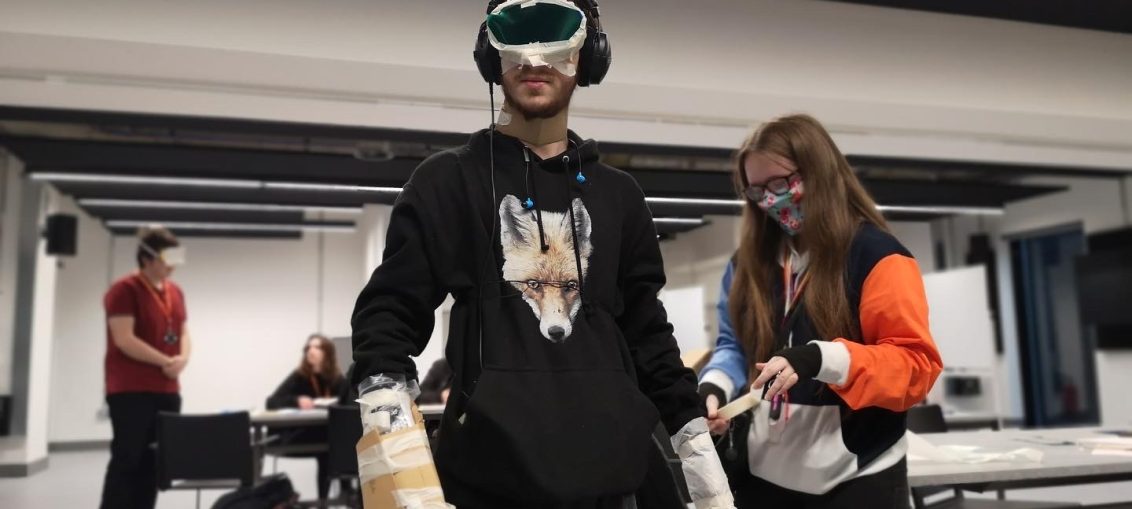These workshops took place at the School of Digital Arts (SODA) as part of the 'Co-Lab' unit, which is intended to get students working collaboratively across disciplines (Game design/sound/future media/film/photography). The 'messy interface' brief asked students to address the complex interface between real and unreal. My workshop was designed to get students working together and thinking about how our senses interact and how we can hack, or creatively disrupt the sensory interface. We looked at the long history of perception-changing technologies; from the microscope to early VR experiments, and the many strategies both artists and scientists have used to disrupt these technologies. After exploring some perceptual illusions and discussing our experiences, participants designed their own multisensory experiments that restricted, augmented,
Tag: perceptual-depravation
Self-isolation
Ganzfeld Variations [Translucent paper cylinder method] From a series of workshop in the 'Experiments in Art and Perceptual Illusion' series, aimed at changing perceptions, heightening awareness, and ‘making strange’ of everyday experiences. Instructions for making: 1/ Cut section of greaseproof paper long enough to wrap around your head. 2/ Secure with tape to make a cylinder. 3/ Place overhead. You will sense the warmth of your own breath, and the loud sound of the paper near your ears. You will see colour and light but no detailed shapes. You will see the texture of the paper, but try to see beyond this. At first, this may feel claustrophobic [You might want to cut small holes for breathing or listening, but these should not
Concerning the inwardly generated image
Navigations
The Ganzfeld [ 'total field' ] experiment is a form of perceptual deprivation, giving an experience of a uniform field of light [More information here] . has become a staple activity in my workshops. Rather than sitting still and listening to sounds I have been opening this up as a mobile activity, or 'navigation' as I have started to call it. It serves as an icebreaker, often requiring people to work in pairs to move through spaces, following ropes or sonic stimuli. The purpose is to heighten the participant's awareness through altering their perceptual experience of space. Participants become aware of new structures of light or start using the body in a different way in order to move, becoming more



